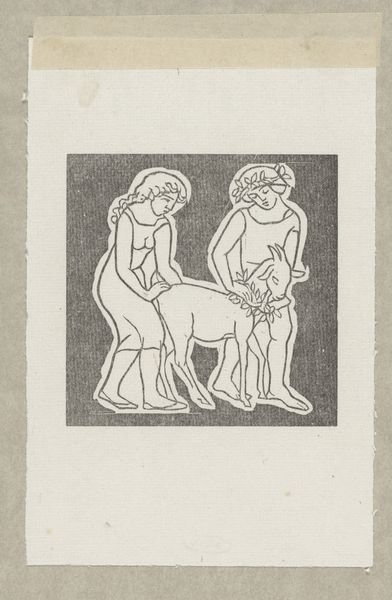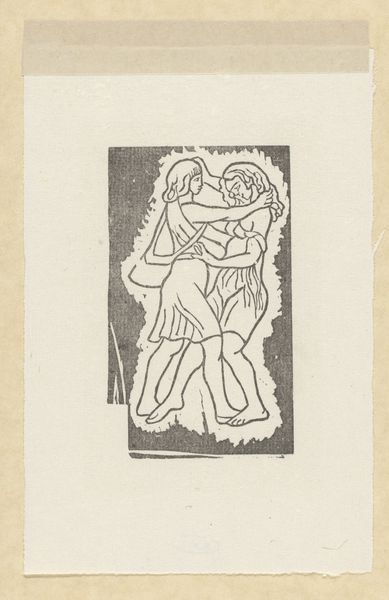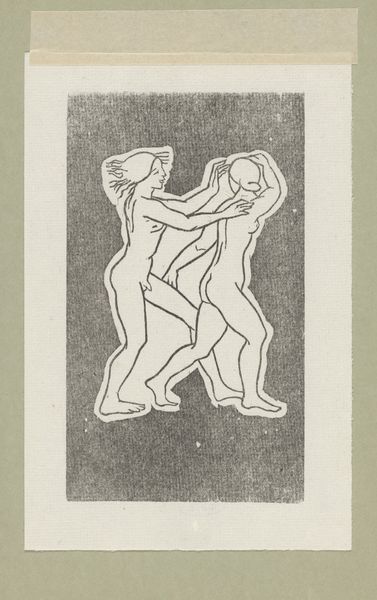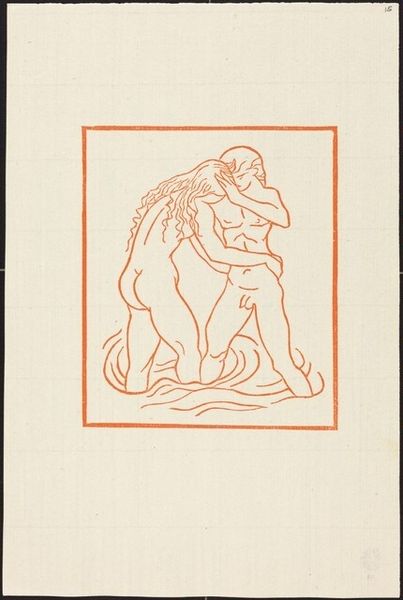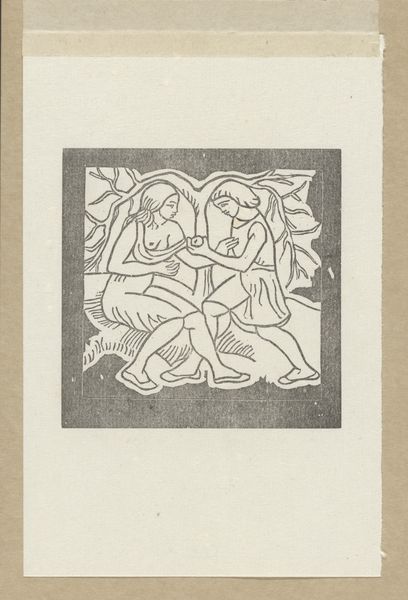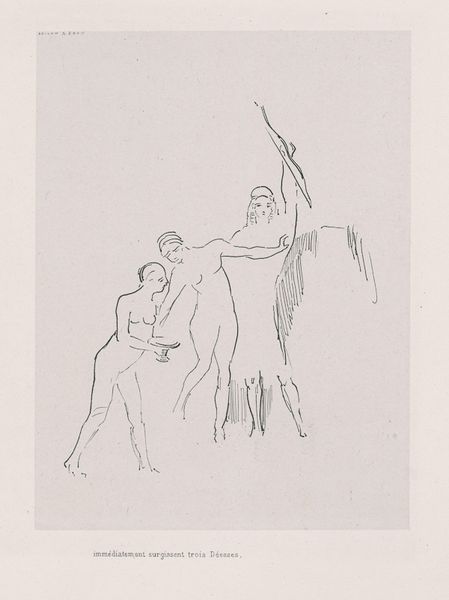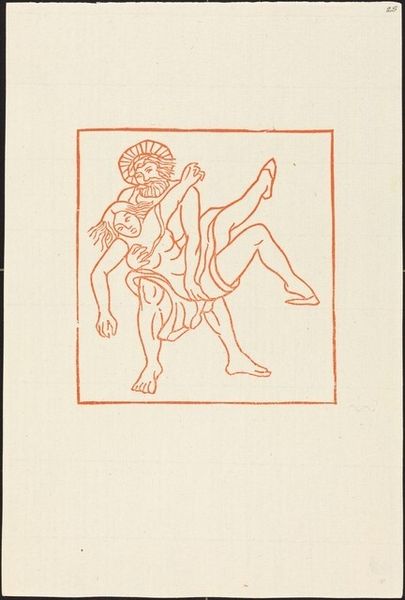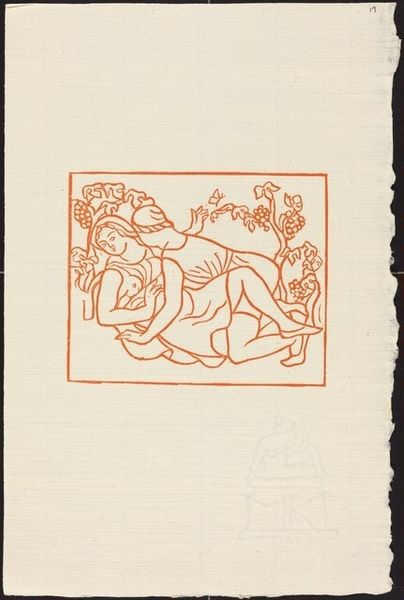
Dimensions: height 199 mm, width 131 mm
Copyright: Rijks Museum: Open Domain
Editor: This drawing, "Daphnis and Chloe bathing in the grotto of the nymphs," was created by Aristide Maillol in 1937. It’s made with ink on paper and it reminds me of classical illustrations but simplified, almost modern. The embracing figures in the water – what strikes you about this piece? Curator: I’m fascinated by how Maillol situates classical themes within a modernist visual language. Looking at this through a historical lens, it's interesting to consider how artists in the early 20th century grappled with the classical tradition. They sought to both honour it and break free from its more academic constraints. The use of simplified lines and forms here seems almost like a political statement, a reclaiming of classical beauty outside the confines of official art institutions. Do you see how the raw quality of the ink drawing lends itself to that? Editor: I do. It feels less about idealization and more about… human connection, maybe? Was there a pushback against idealized forms at the time? Curator: Absolutely! Modernism was, in many ways, a rejection of academic art's emphasis on idealized forms and historical narratives. Maillol, while referencing a classical story, focuses on the raw emotion and physicality of the figures. This aligns with broader artistic movements seeking to depict modern life and experience more honestly. Editor: So it's not just a romantic illustration, but a statement about art’s role in society? Curator: Precisely. The choice to depict this scene with such pared-down means makes it accessible, almost democratic. It suggests that beauty and connection are not the sole preserve of the elite, but something tangible and immediate. This piece prompts us to consider the social and political dimensions of artistic representation. What are your thoughts on this in modern times? Editor: It’s fascinating to think about how even a seemingly simple drawing can be part of a much larger conversation about art and society. I'll definitely see this in a new light now. Curator: Me too. These nuanced conversations always seem to add to the piece as a whole.
Comments
No comments
Be the first to comment and join the conversation on the ultimate creative platform.
